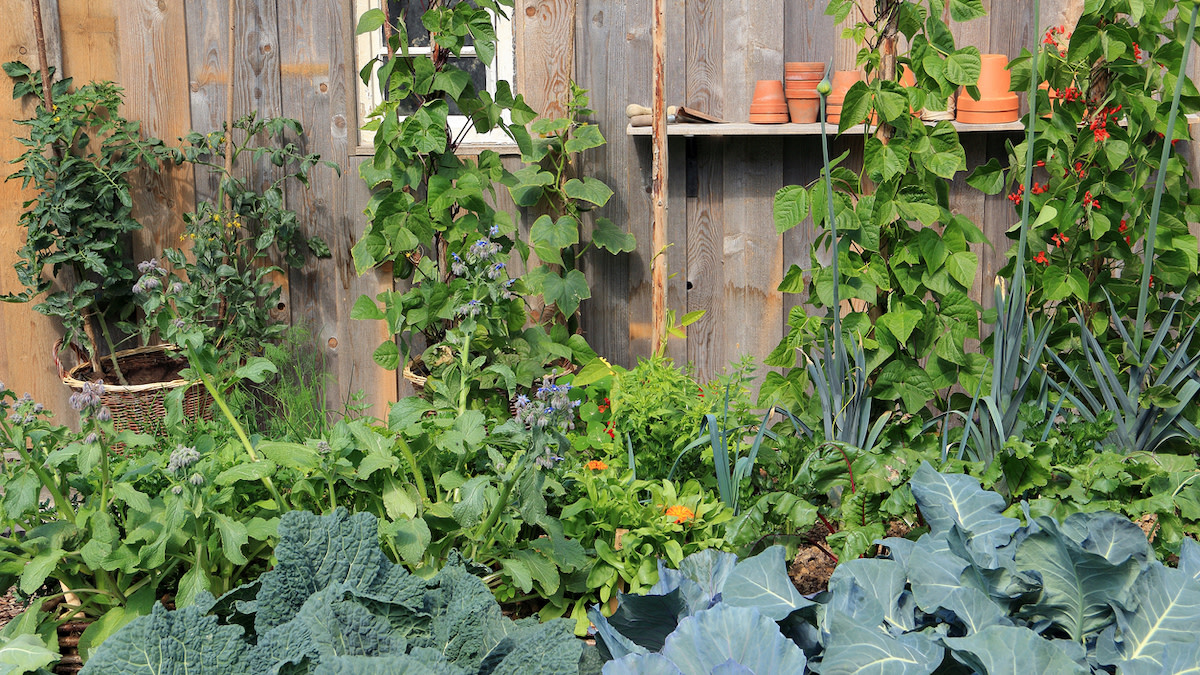
Selecting the space where you locate your vegetable garden might seem mundane or unimportant, but it’s often the reason why some gardens are successful and others aren’t. Most gardeners understand how their USDA growing zone impacts when they should plant their crops. But even within growing zones, there are pockets of unique conditions that can have a great effect on your garden—these are known as microclimates. As I’ll detail below, your garden’s microclimate is primarily dictated by sunlight access, the slope of your yard, and the soil type.
Sunlight
The first and arguably most important thing to consider is sunlight exposure. If you live in a wide-open area with no trees or buildings to block the sun, you can pretty much disregard this section (also, I’m kind of jealous). On the other hand if your yard, like ours, is surrounded by trees and houses this is critical. Most vegetables and fruits require at least 6 hours of direct sunlight exposure to grow optimally. In the gardening world, we refer to this as “full sun.”
The simplest way to find the areas of your yard that have full sun exposure is to wait for a sunny day and then take a picture of your yard every couple hours from when the sun reaches your yard to when it leaves. These pictures will show you which areas are receiving direct sunlight for at least 6 hours through the day.
Now you can narrow your potential garden location to those areas. Keep in mind that if you monitor your sunlight when the sun is low in the sky in winter, the number of sunlight hours will be significantly lower than what it receives in the growing season.
If you find that no part of your yard is receiving 6 hours of sunlight, you can still grow a vegetable garden, but you’ll want to focus more on leafy crops like kale, collards, and spinach and less on fruiting crops like tomatoes, peppers, and corn. Also note that if you have less than 6 hours of sunlight exposure, your yard is probably a prime location for a mushroom garden.
Slope
If your neighborhood is situated in a hilly or mountainous area, the slope of your yard will play a significant role in your garden’s microclimate. We’re lucky enough to be on a south-facing slope, which means we receive plenty of sunlight and warmth when the sun is lower in the sky in the spring, fall, and winter. Our neighbors on the north side of the hill might as well be in a different state as far as their microclimate is concerned.
In general warm, sunny south-facing slopes are great for growing fruiting crops while cool, moist north-facing slopes are better for growing leafy greens and mushrooms. Keep in mind that the impact of the slope on your microclimate increases and decreases with the angle of the slope. If you live on a north-facing slope, but it’s a relatively flat mid-western hill it probably won’t have too much of an impact.
Soil
Once you’ve narrowed down your potential locations to those with full sun situated on the most favorable slope, you’ll want to examine the soil. Soil type can impact everything from the amount of water available to your plants to the average temperature of your garden.
At a high level, most soils are classified as either sandy, loamy, or clay. Sandy soils with their large particles have the lowest capacity to hold water. This means that they are not only drier, but like a desert that is blistering hot during the day and freezing at night, that lack of water causes the soil temperatures to swing more extremely. Loamy and clay soils both hold a lot more water which modulates the soil temperature throughout the day.
While the temperature swings are not ideal for all crops, there are many that thrive in sandy soils. Sweet potatoes, carrots, and potatoes all benefit from the superior drainage of sandy soils. On the other hand, crops that require a lot of moisture like corn, squash, and pumpkin do very well in loamy and clay soils.
At first glance, it might seem like some of these elements that contribute to your garden’s microclimate are good while others are bad, but I would argue that each has benefits and drawbacks. Understanding what your garden is more well-suited to will allow you to shift your garden plan towards crops that will thrive in your specific microclimate rather than trying to fit a circular peg in a square hole.









Conversation